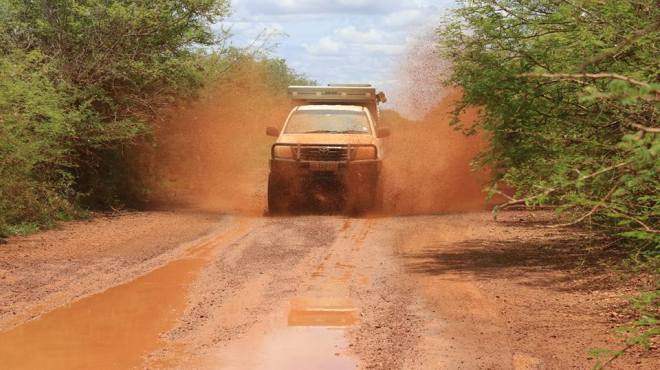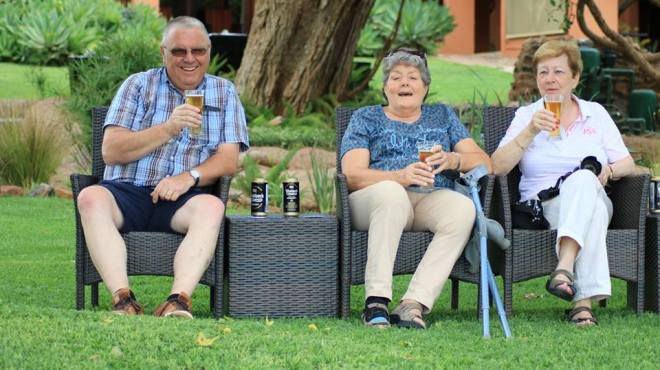We had the most exciting adventures in Southern Africa in 2017-2018.
Some highlights!


OUR DIVERSE CULTURE
Paarl is the third oldest European Settlement in South Africa and is home to a culturally diverse community – the product of a unique history.
The people of Paarl are descendants of the Khoisan, slaves from African and Asia, Dutch settlers, French Huguenots, Jewish immigrants, Italian Prisoners of War, and Xhosa migrant labourers.
The Khoikhoi and San were the first people to utilize the area and original San rock art can still be seen at nearby Wemmershoek and Bainskloof. Originally, Paarl Mountain was named “Tortoise Mountain” by the Khoikhoi.
The Berg River Valley formed the traditional border between the Peninsular Khoikhoi (the Gorachoqua and the Goringhaiqua) and the Cochoqua. The latter group moved their cattle around the various grazing areas of the Berg River and Drakenstein valleys.
The approximately 18 000-strong Cochoqua was one of the richest and strongest of the Khoi tribes, but they were eventually defeated during the second war between the colonists and Khoikhoi and most of their livestock looted.
On the death of their leaders, the tribe dispersed, with some trekking towards the Orange River, while others were in the service of colonists.
EUROPEAN SETTLERS
The original purpose of the Dutch settlement in the vicinity of latter day Cape Town, was to provide fresh food and water to the ships of the Dutch East India Company, on their way to the East. Founder of Cape Town, Jan van Riebeeck, built up fresh meat stock by bartering livestock from the local Khoikhoi.
In 1657, Abraham Gabbema led an expedition to find more Khoi groups to barter with and to search for the legendary treasures of Monomotapa. On the day that they arrived in the Berg River Valley, the granite boulders, towards the west side of our town, glistened in the sun and this inspired Gabbema to name this mountain “the Diamond and Pearl Mountain” from which the name Paarl was later derived.
In October 1687, thirty years after the Gabbema expedition, Governor Simon van der Stel granted the first farms to Free Burghers. Twenty-one of these farms were in Drakenstein (Paarl), and five were on the foothills of Paarl Mountain.
When the French Huguenots arrived in the Cape in 1688, some were granted land in the Drakenstein area.
Their intimate knowledge of the wine industry would be instrumental in establishing the now internationally-renowned wine industry of South Africa.
The headquarters of the South African wine industry, the KWV, is situated in Paarl, on one of the earliest farms (La Concorde, as it is known today) to be granted by Governor Simon van der Stel.
The traditional European practice of private land ownership soon clashed with the communal land use of the Khoikhoi. Land was now granted to the French Huguenots and this meant that water was limited and the wild animals that were hunted by the Khoisan, systematically disappeared from the area.
European diseases, such as small pox, further decimated the indigenous peoples. Many of the Khoisan were forced to move to the interior or became labourers for the colonists.
Between 1658 and 1808, some 63 000 slaves were brought to South Africa from different parts of the world, to sow, harvest, and thresh the wheat and also to load wagons, weed the owner’s fields, and look after the livestock. On wine farms they harvested and pressed grapes. Women did housework and in some cases acted as wet nurses for their owner’s children.
Het Gesticht (a small unbaked brick church) was built in 1813 to provide slaves with a place of worship. From 1820, onwards it became known as the Zion Church and is the fourth oldest church building in South Africa.
After being emancipated in 1834, slaves in Paarl were awarded property in the vicinity of modern-day Berg Street and School Street.
Afrikaya Leisure Travel wish to thank Afrikaya Tours (Margreet van Belle). Through all the years (10), travelling with their tourists through Africa.
This is one of the projects Afrikaya Tours is working on!
To all the people and businesses, who contributed to this school, please tell us your story and state your name or Business!
Also visit: Afrikaya Tours on Facebook.
A self-drive in the Kruger National Park or a safari in a private game reserve? A question asked by tourists and locals alike, time and time again. Surely the animals are the same? One could even argue that between the Kruger and a private game reserve such as the Sabi Sand or Timbavati one could see exactly the same elephant, since the animals have the luxury of roaming freely between the reserves. But that’s rubbish. And here’s why… Botswana has no fences.
My first ever sighting of a hyena was on a main road in the Kruger National Park – it was a hyena pup. What a sight! But instead of being able to follow the hyena through the bush in a 4×4, we were jostling for a vantage point with a bunch of other tourists. In a closed VW Golf. Heads and cameras were outstretched in an ungainly attempt to get a half-decent photo. After half an hour we reached the front of the queue and our reward was a 30 second view of the adorable pup before being hooted at – yes…hooted! Time to move on in search of our next impala.
A real safari is about the overall experience. Tales over pre-dinner drinks from courageous rangers and the sudden use of the flash light during dinner to see the hippo in front of the deck all create the memories that urge us to return at the first opportunity. It’s about submerging yourself in an African fantasy while at the same time seeing real nature in all its spectacular (and at times brutal) glory. It’s about stepping up onto a safari vehicle in search of the Big 5. It’s about the thrill of marauding through the bush after a pack of wild dogs in hot pursuit of an impala.
Why is the game viewing better in a Private Game Reserve?
It’s private! No cars of other tourists in a dazzling array of blinding colours.
Safari vehicles can go off road. In a national park you will be limited to animals visible from the main roads.
The best and most knowledgeable rangers in the business work at the private game reserves.
Rangers are not restricted to national park hours, which means that they can go on night drives. It also means that you can stay as long as you want on a sighting!
Elevated, open-top safari vehicles give you the best view possible so you can get the perfect photo.
Rangers can lead walking safaris so that you can get that perfect photo right up the rhino’s nostril!
You might often hear about about ‘traversing rights’ in reference to your safari experience. So what are traversing rights? Traversing rights allow neighbouring lodges to drive on each others’ land which means more space for you to explore and find animals. The larger the traversing area the better! More land = more biodiversity. Limpopo, Mpumulanga and in KwaZulu-Natal.
Through all my experience and the way I love what I’m doing as Tourist Guide in South-Africa?
Old videos I wish to share with all!
Relax sit back and enjoy!
visit websites:
http://www.afrikayaleisuretravel.com
P.S. We do small group tours through Southern Africa max of 6-12 people.